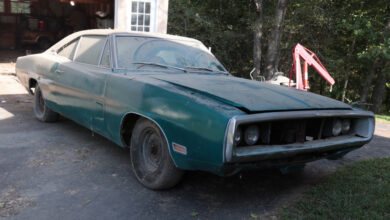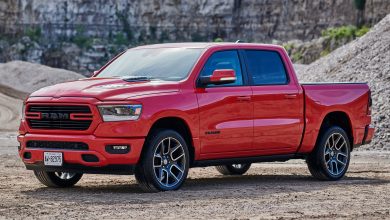
While many Mopar enthusiasts today connect the Charger nameplate with either the 1960s/1970s B-bodied muscle cars of the past or the modern four-door muscle sedan that we all have come to love, there is one generation of Charger that many tend to overlook. The fifth-generation L-body Charger was based on the subcompact front-wheel-drive architecture from the Dodge Omni and Plymouth Horizon. Originally, the Charger name returned on the L-body as an appearance package for the Omni O24 fastback in 1981. By 1983, Dodge rebadged the Omni O24 as the Charger since the performance package sold so well.

In 1983, performance guru and former racer extraordinaire Carroll Shelby, who was brought to Chrysler by former CEO Lee Iacocca, modified the subcompact Charger. Instead of focusing on all-out speed, Shelby decided to work on the suspension and the styling of the car. Shorter springs, unique wheels, performance tires, bigger brakes, and a much quicker 14:1 power steering rack, was the basis for the upgraded Shelby Charger.

The 2.2-liter four-cylinder engine received a higher compression ratio, revised camshaft, and less restrictive exhaust to produce 107 horsepower (80 kW) and 127 lb.-ft. of torque. The 2.2-liter mill was mated to a 5-speed A525 manual transmission with revised gears. The car could now do 0 to 60 mph in 9-seconds flat, run the 1/4-mile in 16.8-seconds @ 82 mph, and had a top speed of 117 mph.

When it came to the styling, Shelby went all out. A new front air dam, side skirts, aggressive-looking C-pillar covers, and a rear spoiler, altered the Charger’s looks for the better. Shelby’s team then went and added the classic Shelby racing stripes to complete the Charger’s new sporty look.

There was one issue, the body kits for the cars had to be shipped to dealers to be installed since a ground clearance issue prevented the cars from being shipped on car carriers. But it didn’t stop customers, as 8,251 units were sold during the 1983 model year.

Knowing it had a hit on its hands, Dodge brought back the Shelby Charger for the 1984 model year. While the standard Dodge Charger models received quad headlights, the Shelby models continued to wear the previous year’s front fascia and bumpers. The 1984 models also got a bump in power, with a new 2.2-liter H.O. engine making 110 horsepower (82 kW) which could now be ordered with an optional automatic transmission.

In 1985, the Shelby Charger amped up its presence thanks to the introduction of a new 2.2-liter with a Garrett T3 turbocharger and Bosch multiport fuel injection (MPFI), the new engine produced a whopping 146 horsepower (109 kW) and 168 lb.-ft. of torque. The Shelby Charger could now do 0 to 60 mph in 7.8-seconds and an increased top speed of 124 mph.

A total of 7,709 Shelby Chargers were built in 1985 and another 7,669 units were sold in 1986. With 1987 being its final year, only 1,011 units were produced by Chrysler, with an additional 1,000 units being produced by Shelby himself and redubbed the Shelby GLHS.

While the Shelby Chargers are harder to find in good condition as time goes on, there are still some really good examples still out there. This 1985 model is one of them and it goes across the auction block next month at the Mecum Chattanooga event.

This particular model is 1 of 843 Blue Shelby Chargers produced in 1985. It features a 5-speed manual transmission and features air conditioning, new tires, a new master cylinder, rebuilt rack and pinion unit, and a recent tune-up.
The car will go across the auction block on Friday, October 15th. For those interested in making a bid on this vehicle, you can visit the Mecum site for more information on doing so.
1985 Dodge Shelby Charger Image Gallery:

















5 replies
Loading new replies...
Join the full discussion at the Mopar Insiders Forum →